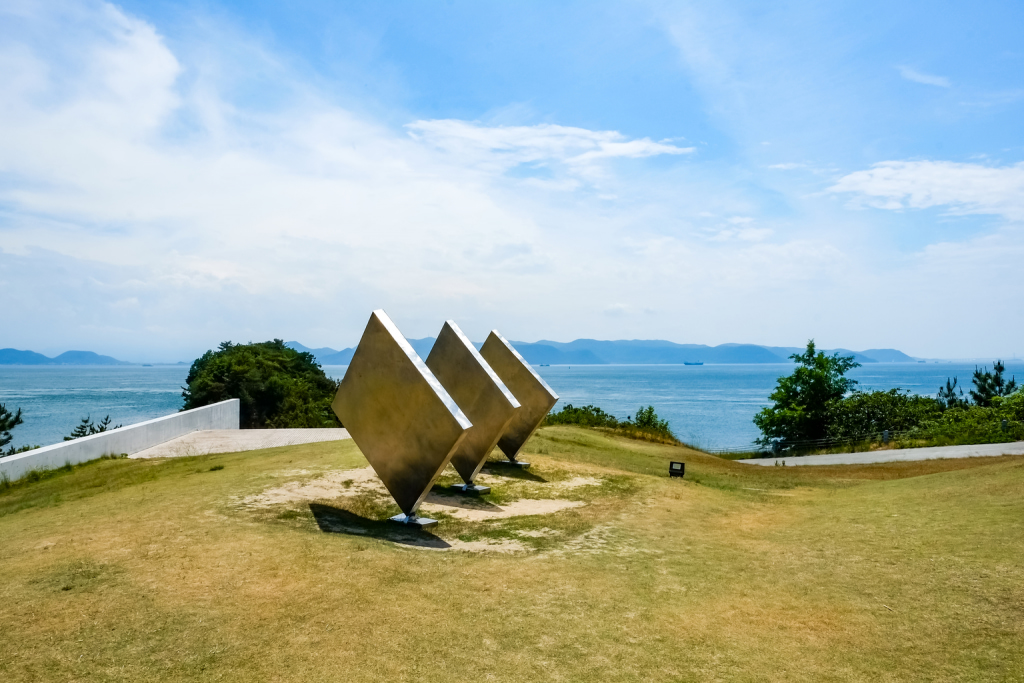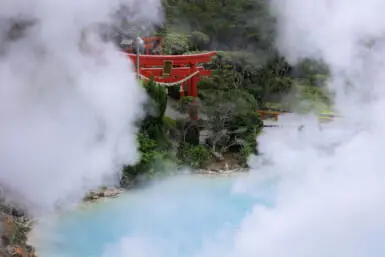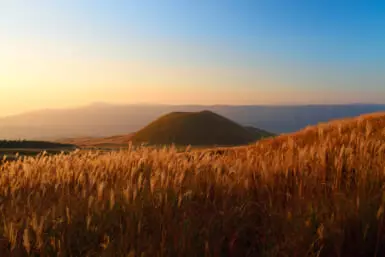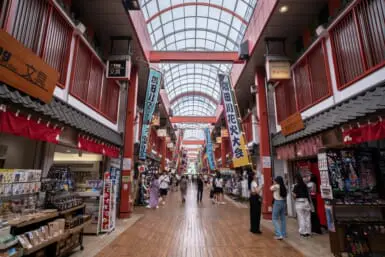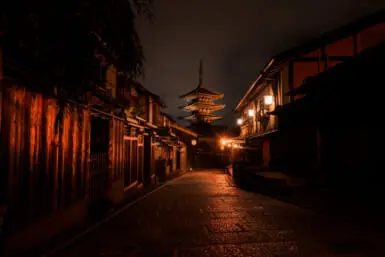Not so much of a secret anymore, Naoshima, colloquially referred to as ‘Art Island,’ is an excellent jumping-off point for exploring the wider, more untouched beauty of the Setouchi region, one of Japan’s most fascinating areas and a destination that’s both unspoiled and so ready for tourism.
Here’s a super brief history lesson: The island came into its current incarnation around 1985 when Tetsuhiko Fukutake, the founding president of educational publishing house Fukutake Publishing, met Chikatsugu Miyake, the mayor of Naoshima. The pair had a grand vision to develop a cultural and educational area on this sleepy island.
By 1992 they recruited Tadao Ando, one of the nation’s greatest architects, to join the cause, and not long after, Benesse House Museum came into being. From there, the island’s cultural standing has snowballed, with world-class artists like James Turrell and Yayoi Kusama making their mark on the landscape, and today it’s being touted as one of the country’s must-visit locations on par with iconic destinations like Kyoto and Kanazawa.
Naoshima and its neighboring islands play host to the 2022 edition of the Setouchi Triennale, so let’s take a look at how best to adventure through the island this summer.
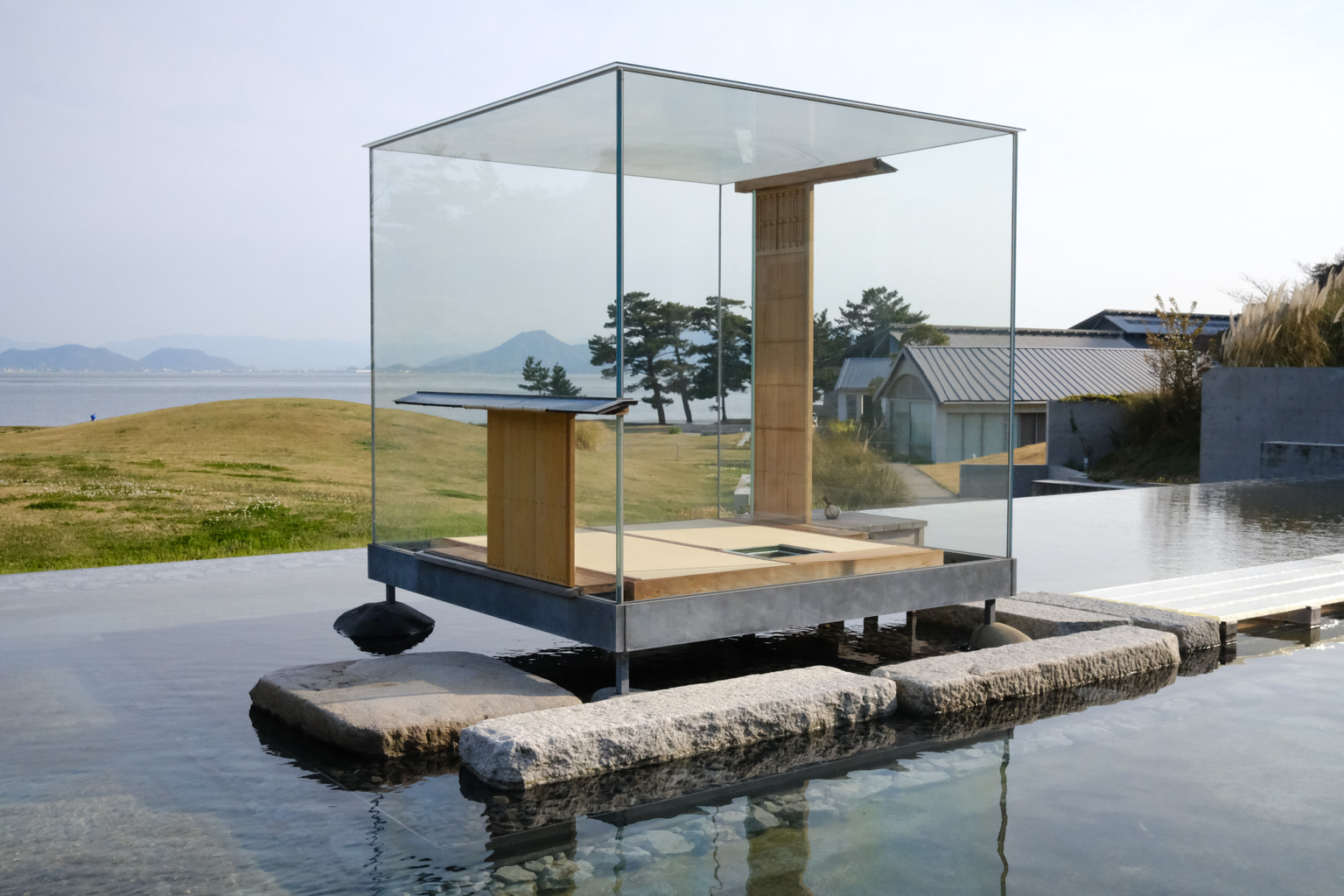
Hiroshi Sugimoto, Glass Tea House “Mondrian”, 2014 (c) Hiroshi Sugimoto. This work was originally created for LE STANZE DEL VETRO, Venice by Pentagram Stiftung.
Lay of the Land
Naoshima can be divided into three key areas: east, west and south coast. The northern part of the island is a little more industrial, home to the Naoshima Town Mount Seto Service Reservoir, a Mitsubishi outpost and Fujihara Construction. So, in short, there’s not much you’ll find over there.
On the west coast is Miyanoura Port, the port you’ll reach first if you’re traveling via Takamatsu and quite possibly Uno (Okayama Prefecture). It’s an excellent place to start your Naoshima journey, as upon arrival, you’re greeted by Kusama’s iconic, larger-than-life red pumpkin, a sprawling open lawn and a well-stocked information center to get you info-equipped before embarking on your art adventure. About a three-minute walk from the info center sits the charmingly scrappy and eclectic I Love Yu, a public bath-art piece crafted by artist Shinro Ohtake.
The adjacent port on the east coast is named Honmura Port, which services boats traveling from Uno. This side of the island is home to the Ando Museum and to a cluster of houses, some residential and some that make up the Art House Project. One of the island’s more understated but no less important art features, the Art House Project was established in 1998 and is a collection of once-empty houses, now filled with art designed specifically for each space and is perfect for exploring on foot or bicycle. Currently, the project comprises seven locations: Kadoya, Minamidera, Kinza, Go’o Shrine, Ishibashi, Gokaisho and Haisha.
Towards the southern tip of the island sits the areas we can dub unofficially ‘Benesse land,’ aka Benesse Art Site. Here you’ll find Benesse House, the luxe art-centric accommodation, as well as other neighboring blockbuster sites like the Lee Ufan Museum (a museum dedicated to the Korean minimalist painter and sculptor-artist), and the Tadao Ando-crafted Chichu Art Museum, housing an unlikely but harmonious trio of Walter De Maria, James Turrell and Claude Monet pieces.
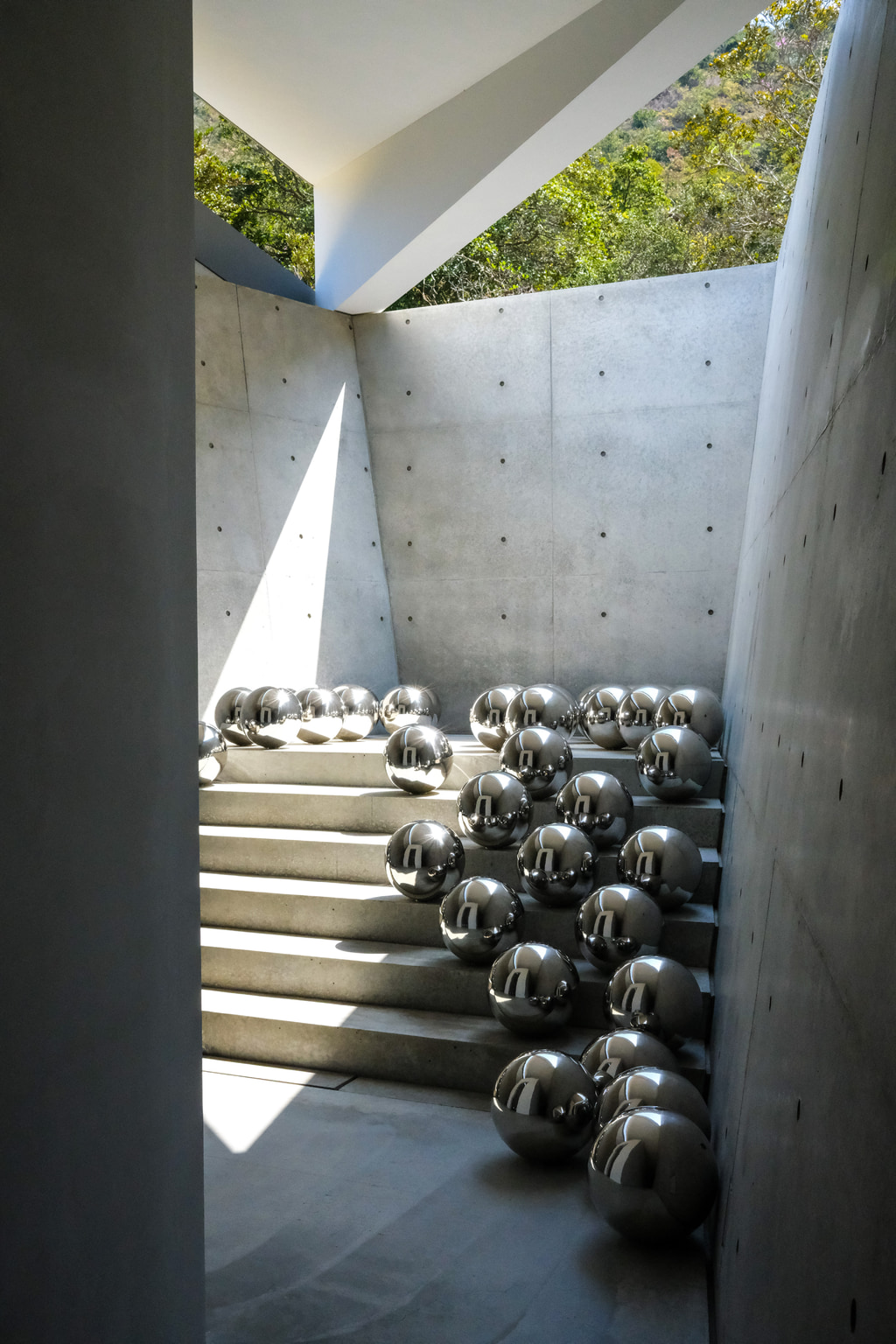
Yayoi Kusama, Narcissus Garden, 1966/2022, Stainless steel spheres, Copyright of Yayoi Kusama.
Moving About
The hardest part about getting around Naoshima is deciding which transport method to take. A rental car is a no-brainer if you’re on the island for a day trip and want to clock as much as possible. You can pick up a Kusama-inspired polka-dot car from the rental shop, which sits right by Miyanoura Port. You can rent by the hour or for the full day.
Bike rental is a pleasant way to go if the summer sun is out and it’s not too hot. It offers easy accessibility to practically every corner of the island. While there is the occasional hill, it’s nothing a little extra push – or maybe some battery-powered assistance – can’t solve. Like the cars, you’ll find the rental shops right by Miyanoura Port. They’re hard to miss.
If you want to let someone else take charge of the transportation, there’s always the bus too. The Naoshima Town bus travels between Miyanoura Port and Tsutsujiso, on the other side of the island, making a brief stop at Honmura, delivering visitors to the Art House Project and Ando Museum. It runs almost every hour and costs just ¥100 for adults and ¥50 for children. The free Benesse shuttle bus operates between Tsutsujiso and Chichu Art Museum, stopping at Benesse House Museum and Lee Ufan Museum. It comes around every 30 minutes and every 15 during the high tourist season.
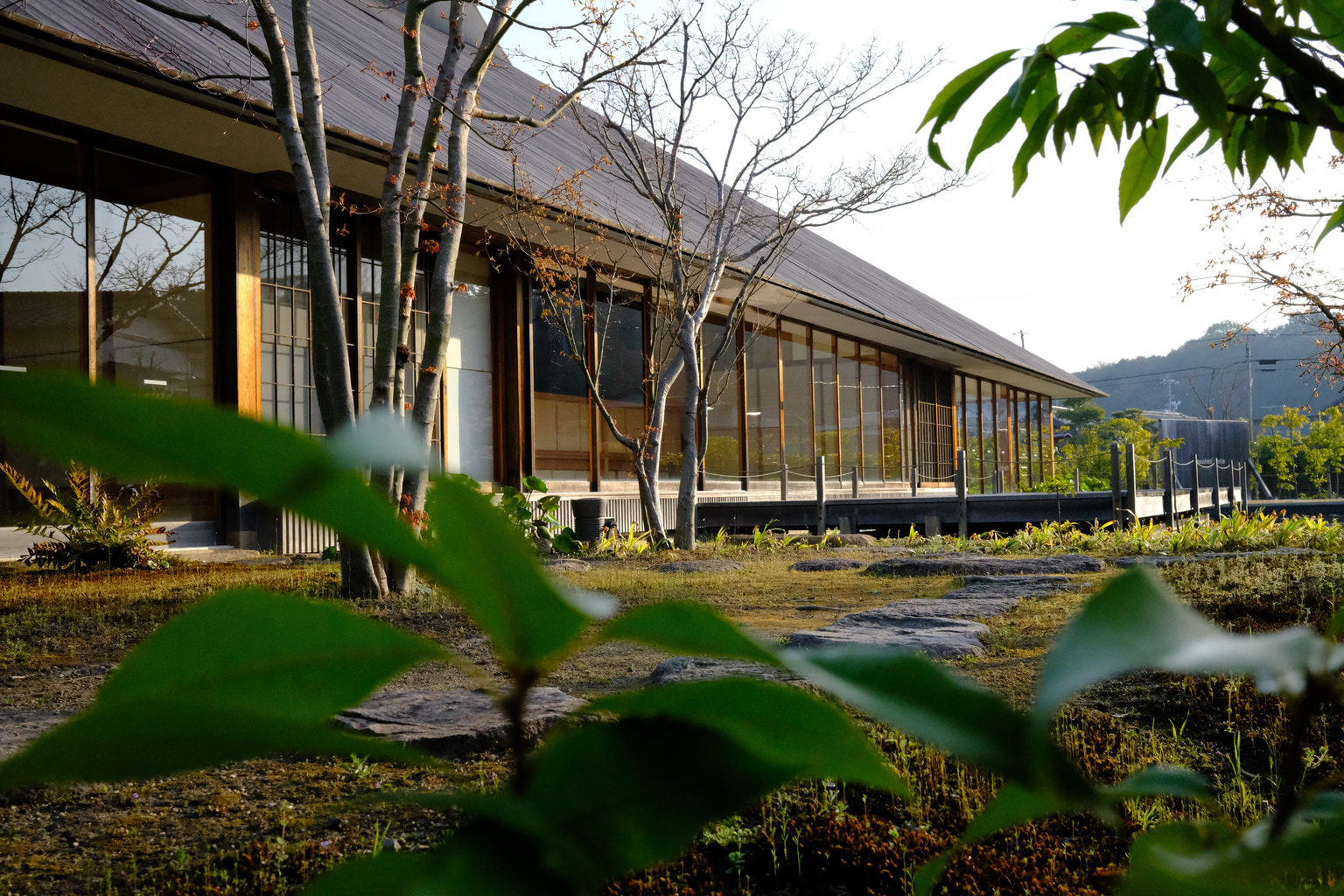
Dining and Drinking
One of the best parts of Naoshima, an island so full of contemporary features, is that the island feels like it hasn’t sacrificed its authenticity and hasn’t uprooted its legacy as a fishing town in exchange for modern tourism. All of this is to say you’ll find as many – maybe even more – charming local and cozy businesses as you will slick new establishments. To do Naoshima properly is to try them both.
To get a real taste of the island, have lunch at a local teishoku joint like Yuunagi, which serves up freshly caught fish in various styles. Grab a bowl of cheap but satisfying udon from Udon Shiroobi. You are in Kagawa Prefecture – the home of udon – after all.
Early birds can get the best view of the island by taking a stroll along road Route 256, which cuts through the center of the island, connecting the east and west coasts. It’s an ideal, maybe two-hour loop, which is well worth it if you have the time and inclination. Stay cool with a coffee from Akaito Coffee, a quaint little coffee joint that hand roasts its own beans and opens at the spritely hour of 7am.
As the day rolls on, and it’s time to choose a dinner destination, consider Ebisukamo. This is a cozy Japanese izakaya that feels as much like dining in a close friend’s living room as it does an official dining establishment, but that’s the charm of it all. The shop has an English menu, an impressive selection of local sake and some of the best seafood dishes you’ll find on the island.
For those looking to kick on a little later in the evening, don’t get too excited for a super late one, or be prepared to bring the party back to your place because most spots close pretty early; it is still inaka (regional Japan) after all. That said, if you’re on the hunt for a 9pm nightcap, Little Plum is a vibey café and bar housed in a renovated marine container. Sit out on the deck with a cool, crispy Naoshima beer or one of the other almost 100 cocktails and soak in the island ambiance. If you’re getting too boozy, rest easy in the comfort that the bar’s second floor is also a dormitory.
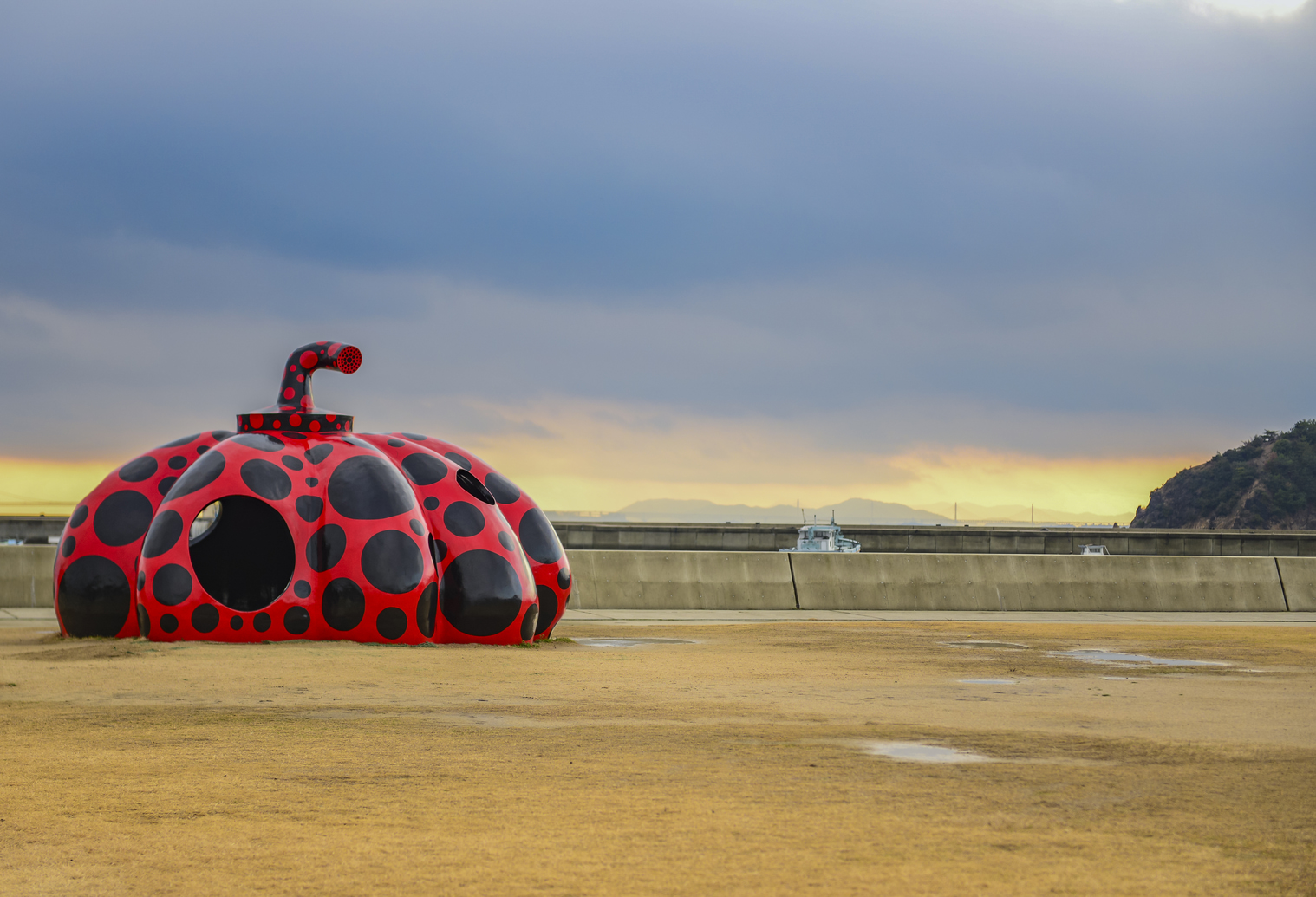
Triennale 2022 Summer Edition
Held every three years, the Setouchi Triennale is a celebration of art, culture and the beauty of the Setouchi region. It kicked off in 2012, and this year marks the fifth edition of the event. A little different from the regular happenings on the island, the festival takes over a cluster of islands in the Setouchi area – including Shodoshima, Teshima, Oshima and Inujima – and hosts events and pop-up exhibits during the festive period.
The Triennale runs in three legs throughout the year, with spring done and dusted; next up is the summer edition which kicks off in early August and runs through to early September. The autumn edition is later in September.
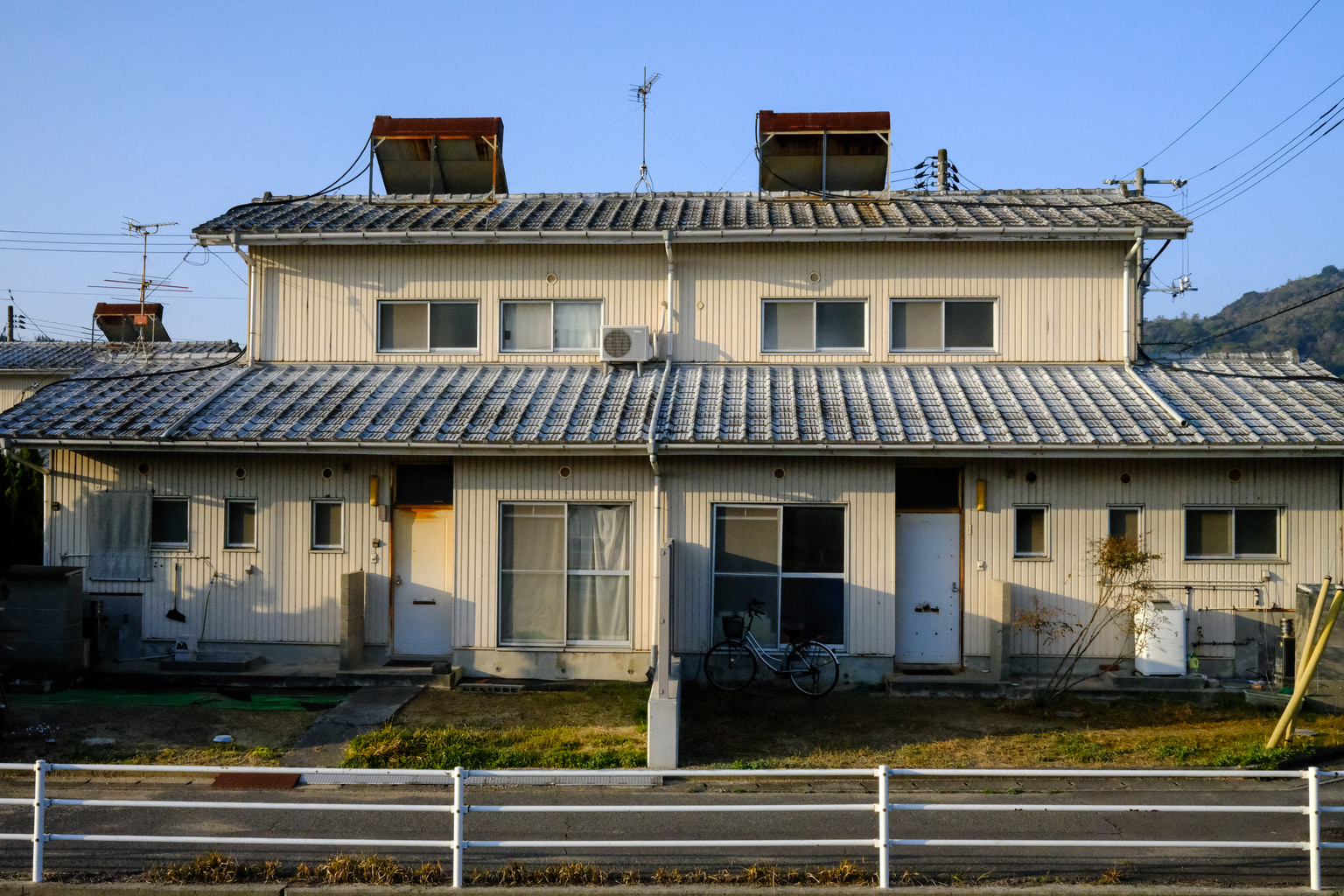
Where to Stay
Before visiting Naoshima, it is easy to be under the impression that Benesse House, the hotel that you could say started it all, is the be-all and end-all of accommodation on Naoshima, but in reality, there’s so much more. If you do plan on visiting, it is worthwhile booking at least one, maybe two nights of accommodation on the island to avoid the back-and-forth timing of the ferries.
There are a few options to choose from on the accommodation front, depending on what you’re after. Budget travelers will do best with the hostels like Naoshima Backpackers, or if you’re looking for something more old-school and local, consider a minshuku (Japanese guest house stay).
Roka is a new hotel making waves in luxury hotel circles. Inspired by the elegant hospitality of a ryokan, and the modern, sleek and thoughtful minimalism of a lifestyle hotel, it hosts a sushi restaurant, kaiseki dining and a tranquil, almost hidden location.
All that said, there is a reason why Benesse House has the reputation it does. The facility is located on the southern coast offering unparalleled views, excellent dining facilities, well-designed rooms (of various styles) and excellent access to some of the island’s biggest drawcard.
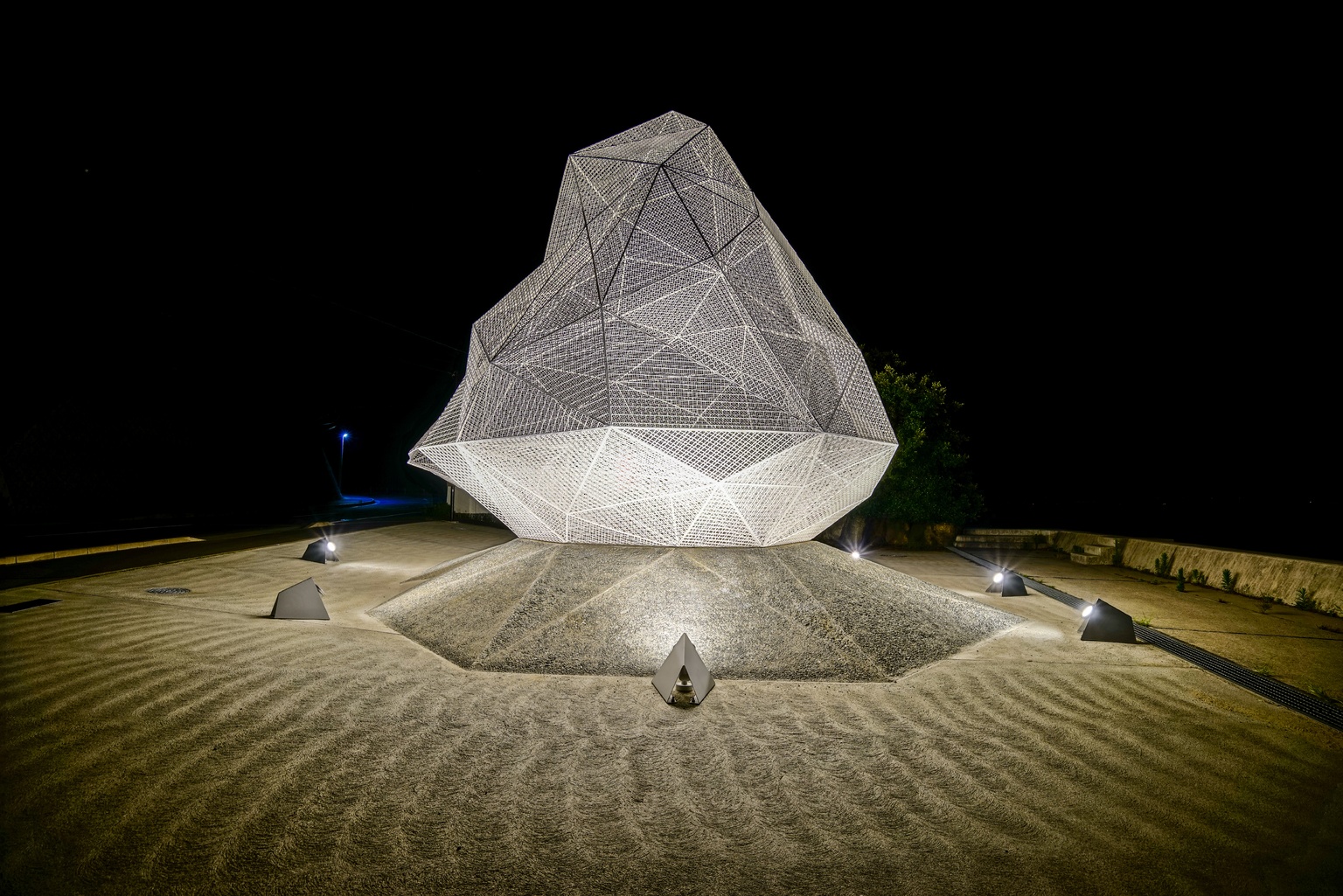
Going Beyond
If you want to look further, Teshima is the most common ‘next island’ spot, with east ferry access and the Teshima Art Museum drawing crowds, however, if you’re looking for something a little bigger in terms of size and landscape diversity, check out Shodoshima, the soy-sauce island or Takamatsu (on the Shikoku mainland) for udon and stunning Japanese landscapes.
Lucy Dayman stayed at Roka + Benesse as a guest for TARO Luxury Travel Specialist & Media.
Feature image credit: George Rickey Three Squares Vertical Diagonal, 1972-82

